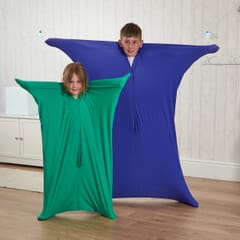Get exclusive deals you won't find anywhere else straight to your inbox.
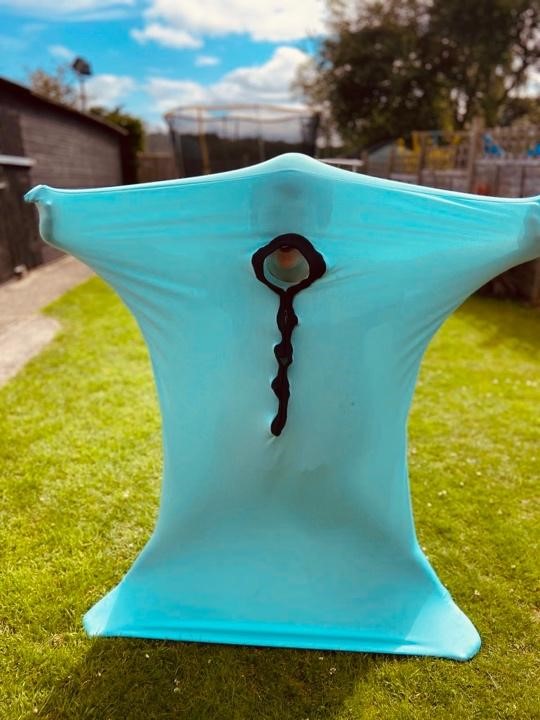
Guest Blog - 'All About Body Socks'
Juniper Tree Therapy
Hi there! We’re delighted to be asked to contribute to Sensory Direct’s blog and discuss Body Socks. We’re Occupational Therapists who work with children in their homes, schools, or in clinic settings.
We work with children who may have a variety of needs including Sensory Integration difficulties, neurodevelopmental conditions such as Autism Spectrum Disorder, or conditions which might have specific physical or mobility restrictions such as Cerebral Palsy.
We also have a specific interest working with children who have emotional regulation, or attachment difficulties.
Body Socks can be a brilliant therapeutic tool to have in your kit. They are transportable, durable, don't take up lots of space, and can be used in so many different ways.
Allow us to tell you more about them!
What is a Body Sock?
At its simplest, a Body Sock is made of lycra, which you can snugly fit your whole body into (like a sock fits around your foot!) It has an opening that you can climb into, and Velcro you can use to seal the entrance (but you don’t have to!).
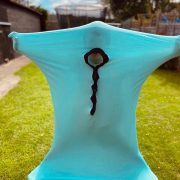
How Does it Work?
Sensory Integration tells us about one of our sensory systems called proprioception. We receive proprioceptive input when we use our muscles e.g. when pushing against something which gives us resistance.
This is what the body sock can do! Proprioception can be calming, organising, help us to know where our body is, and help us to use our body effectively. It is sometimes known as the ‘magic sense’ as it can help us ‘wake up’, and ‘calm down’ our systems.
Sensory Attachment Intervention helps us to consider the ways that we can play, interact, and use different therapy tools to regulate from an emotional perspective, as well as a sensory perspective.
For some children, playing in a Body Sock can help them feel a little safer, as they can still interact but have a sense of ‘containment’ around them – they can retreat into a ‘bubble’ if they want to!
You can also see through it when inside, so you can see out but others can’t always see you that well.
Who is it most helpful for?
Essentially, anyone who enjoys playing in it! It might be particularly helpful for children who have lots of energy, who might present as ‘hyperactive’, who may benefit from slowing down.
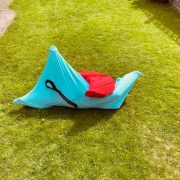
What sort of things can I do in it?
We would always say that the best way for a child to play is with them taking the lead. We are intrinsically motivated to seek out play experiences that are helpful for us!
However, sometimes children find it difficult to think of ideas for themselves, or to organise themselves. There are some ideas here! –
- Fill the body sock with cushions and blankets –climb inside your ‘bubble’ and relax whilst having a nice squash! Perhaps read, or listen to music
- Stretch out like a starfish, or tall like a rocket
- Complete a (safe!) obstacle course. Crawling under and climbing over things can be particularly fun in a body sock!
- Having a sausage rolling race
- Play charades – pretend to be different animals, or letters, or objects, and see if others can guess what you are!
- You could even use it on a trampoline if the child is able to
- Synchronised dancing to music
What size do I need?
Body socks come in different sizes. Although body socks do stretch, usually children and adults would want to feel nice and contained in it – so when they stretch out, they feel resistance.
Sometimes if a child uses one that is too big, they don’t get enough resistance and therefore aren’t very keen to use it. Ask advice for your specific child!
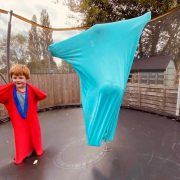
What do I need to know when I’m using a Body Sock?
When we are providing opportunity for children to go ‘inside’ something, we need to make sure that the ‘outside’ is safe. This means;
- Physically safe – no sharp edges, nothing they might stand on, or bang into, or damage – so they don’t hurt themselves or anyone else, or feel embarrassed if they do bang into something
- Emotionally safe – this means that a Key Adult is available to make sure they have everything they need. This might include making sure other children or adults nearby are kept at a safe distance, that no one comes into or leaves the room without the child knowing, no one touches them unexpectedly, and that they can get out when they need to. To climb into something (especially when your vision is occluded!) can make you very emotionally vulnerable, so it is really important to make sure you’ve thought about all of these things in advance.
- Your child might like to position themselves ‘backwards’ – so the opening is behind them. Others might like to stand in it ‘forwards’ – possibly even with their head sticking out. Whichever way they go for is fine, and will help them to feel safe.
Don’t ever ‘cajole’ someone into going into a body sock – if their body is not organised, they might not feel safe – and might even feel trapped.
Timing is really important with play – using games and toys at times when it feels right for the child.
Essentially, having fun is the main component for ANY play to be organising and regulating. Explore, experiment – enjoy!

Blog written and submitted by Emma Shedlow, Juniper Tree Therapy
Images supplied for the Blog with consent from Juniper Tree Therapy. Do not reproduce without permission from Juniper Tree Therapy.


